How to organize outdoor gear, according to people with amazing gear closets
Content is created by CNN Underscored’s team of editors who work independently from the CNN newsroom. When you buy through links on our site, CNN and its syndication partners may earn a commission. Learn more
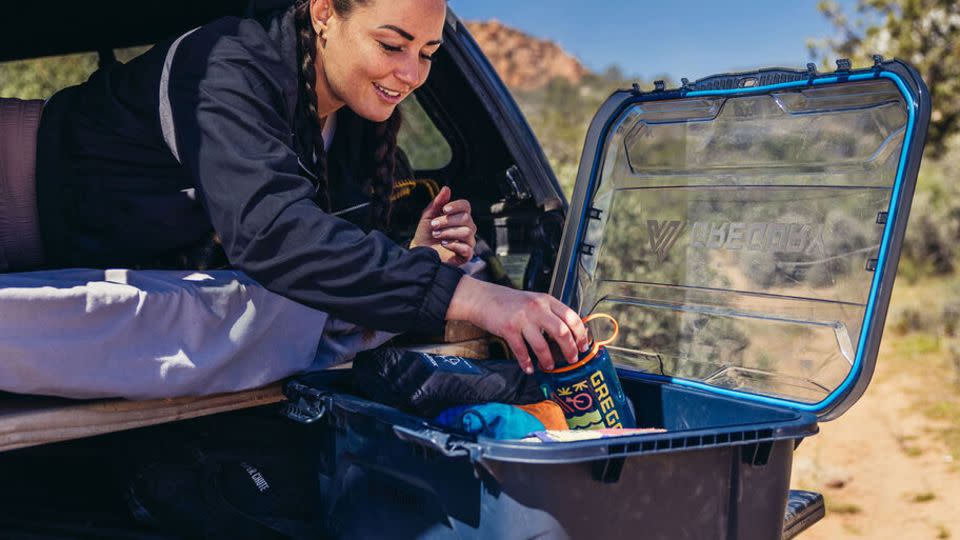
Organizing your outdoor gear isn’t just about keeping a tidy backpack. It’s a fundamental habit that can help you enjoy the outdoors as safely and efficiently as possible. From sleeping bags and sleeping pads to camping tents and backpacking gear, proper storage and organization help keep your outdoor equipment accessible, in working order and long-lasting. Plus, knowing exactly where your equipment is stored makes all the difference in your ability to head into nature on a whim, be it a weekend camping trip, a long bike ride or a hike near home.
In our opinion, you can never have enough outdoor gear. Whether you’re an avid hiker, seasoned climber, camping connoisseur or someone who likes to relax at a local park, stocking up on quality gear is essential for enjoying the outdoors. But the secret to stocking a robust gear closet (or basement or garage) is ensuring your equipment is sorted and properly stored.
We know organizing all your stuff is no small feat. However, it’s essential. To help you get your gear in order, we asked outdoor organization experts for their recommendations on what it takes to stay organized and correctly care for equipment so that it’s in working order for many years.
Why is gear organization important?
For anyone with an abundance of outdoor gear, it’s all too common for storage spaces like closets, garages and basements to get a bit chaotic. Aside from the chaos, it’s easy to forget which pieces of gear we even have, or more importantly, which may need some tending-to from season after season of use. Smart storage and organization are key to keeping your equipment at the tip of your fingers and in tip-top shape. By creating a gear organization system, you can ensure your supplies are properly stored, in working order and right where you left them.
How to organize your outdoor gear step by step
Inventory your equipment
It’s challenging to stay organized when you don’t have a pulse on all your gear. Jacey West, an outdoor content creator and founder of Adventurous Homebody, says the best first step for staying organized is to take inventory of your items. You can do this by unpacking and sorting your gear into piles by type of equipment or by category of activity.
“Every year at the beginning of the season, I audit my gear to see what I have [and] see what needs to be replaced,” says West. “I’ve found keeping everything in bins and sorted by type of activity is so helpful for my brain — and it makes it easy to grab and go.”
You can also create a simple spreadsheet or handwritten list of your equipment as you sort. That way, you have a bird’s eye view of what’s on hand and a backlogged history of your items. This helps keep track of your gear year after year and ensures you don’t lose key pieces of equipment from season to season.
“The great thing about camping [and outdoor] gear is once you invest in it, it will last for a long time,” adds West. “That is if you keep it organized and well-taken-care-of so you don’t have to buy multiple things over and over again.”
Invest in proper gear storage
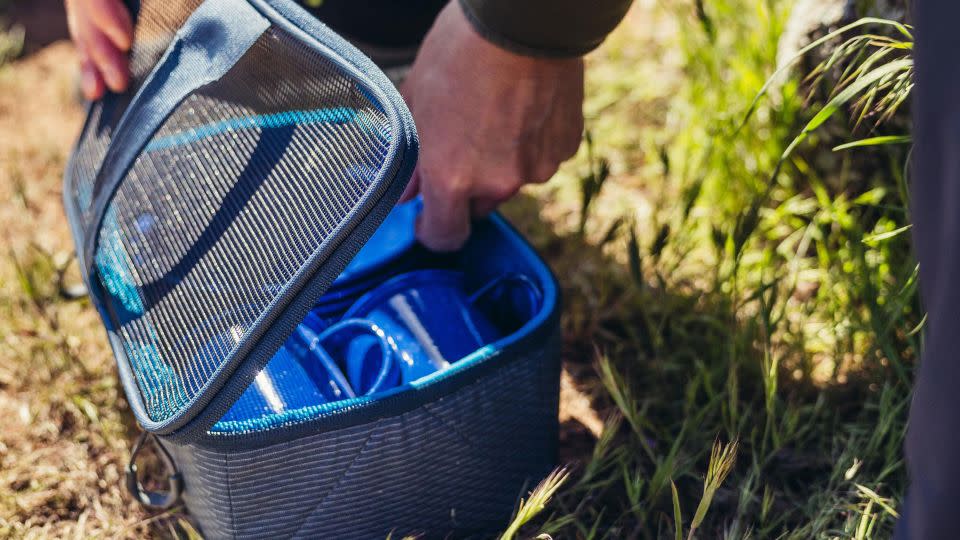
Bins, bags, boxes, shelves and stuff sacks make all the difference when organizing. Once you know the equipment you want to stash, the next step requires selecting storage options that suit your needs. West recommends storing supplies in hard-sided bins so nothing gets crushed. She uses small boxes and bins sorted into different categories for smaller items — from kitchen gadgets and camping accessories to apparel like hats, bandanas and hiking boots.
Kyle Wood, an avid rock and ice climber and passionate gear organizer, also recommends installing peg board or slatwall to hang smaller items like climbing gear, headlamps and kitchen and camp tools on hooks. “The perfect system for me is hanging hooks on slatwall at different depths,” says Wood. “I custom fit pieces of slatwall on the back of my Ikea Ivar shelves so that I can stack boxes and also move and arrange gear on the slatwall as I’d like.”
Sort and store your gear
With the proper storage in hand, it’s time to sort and store your stuff. And while everyone’s preference for organizing and storing gear will differ, a few rules of thumb remain the same. Most gearheads say it’s important to hang soft items like down jackets and sleeping bags on hangers instead of compressing them. Doing so extends their lifespan by helping the fabric dry out, avoiding wrinkling and allowing natural fibers, like down, to breathe and keep their loft long-term.
“While it’s sometimes recommended to hang up your sleeping bags on a hanger like how they display them in stores, I don’t actually do that,” says West. “Instead, I just keep them loose in [my camping] bin and leave them out of their compression sack.”
Other sound organizing advice is to sort gear into bins and bags by specific use cases, like camping, kitchen and cookware, climbing or biking. You can also pack bags and boxes for your preferred adventure type, be it a backpacking trip, a weekend camping trip or a gear bin stocked with items for a quick trip to the park. Consider hanging your favorite gear on hooks for easy access or keeping commonly used items at the top of your bins so they don’t get buried throughout the season. Lastly, use blue painter’s tape and a Sharpie to write out the list of gear or category of equipment on the front of each storage container, especially for boxes and bins that aren’t clear.
Tend to your gear for long-term use
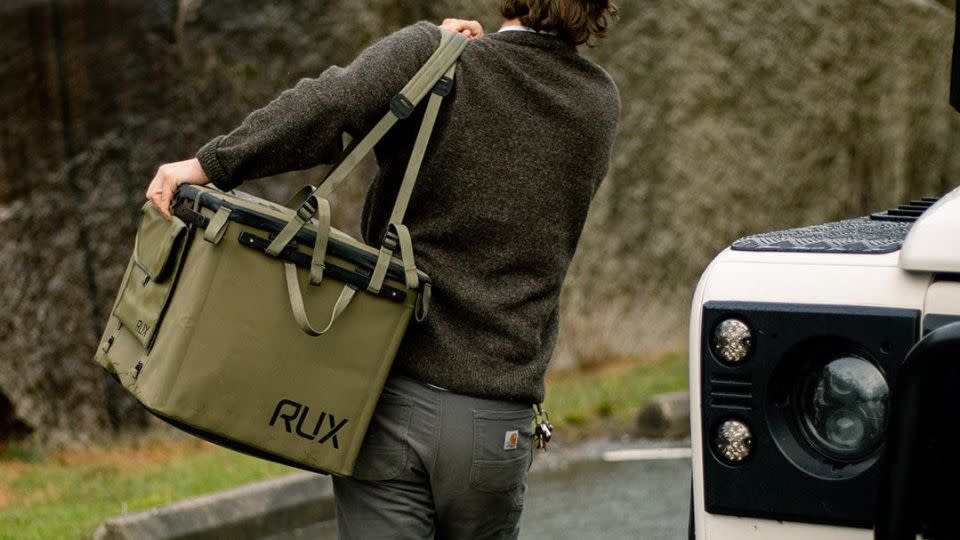
Properly storing your gear also means washing and mending your items before putting them away for the season. We’ve covered how to clean your outdoor gear before, including washing and re-waterproofing your camping tents, rain jackets and down sleeping bags with Nikwax. Also, fully dry out your hydration reservoirs and clean mud and debris off of your boots, tents and apparel before packing them into storage containers.
“If your gear is organized well, you can take care of it well,” says Sarah Borgen, an outdoor content creator and weekend camping warrior. “I think many people drop the ball on storing gear like water reservoirs and jugs. They’re easy to forget to clean after a trip or you might accidentally leave water in them. Then they get nasty and are much harder to clean.”
Borgen says immediately after returning from a camping trip, she organizes her gear into its proper organization bins. First, she dries her water reservoirs and filtered water bottles before packing them away so they don’t grow mold or start to smell in storage. Then she hangs up her backpacks and bags on S-hooks, hangs her jackets and sleeping bags on coat hangers and puts remaining items in their proper bins.
Outdoor gear storage essentials
Efficiently organized gear unlocks the door to adventure. From categorizing your equipment into containers fit for its intended use case, such as cooking, camping and clothing, to packing your supplies into grab-and-go containers so you can hit the road faster, there are many perks of and possibilities for organizing gear in a way that suits your style of exploration.
Here are our picks for the best gear storage shelves, soft-sided and hard-sided bins, packing cubes and more to maintain order and maximize efficiency so you’re always ready for whatever adventure’s ahead.
Shelves and racks
Ikea Ivar Shelf Unit
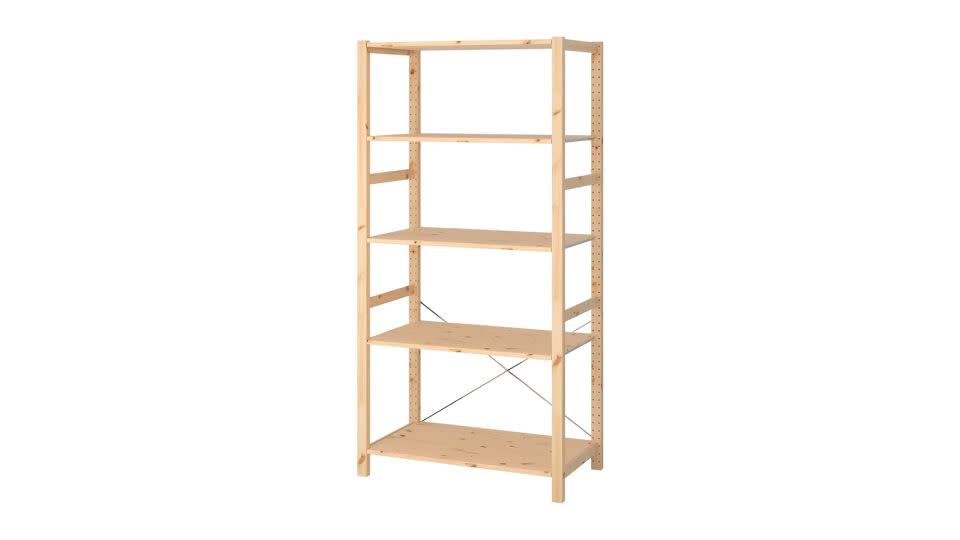
This sturdy, customizable shelf works wonders for organizing your gear. Made of untreated, solid pine, it’s both durable and beautiful. Individual shelves hold up to 99 pounds and can be moved up and down to adapt spacing to your needs. If you need more space, add additional Ivar units side by side to extend the total shelving width.
Ikea Ivar 2-Section Shelving Unit
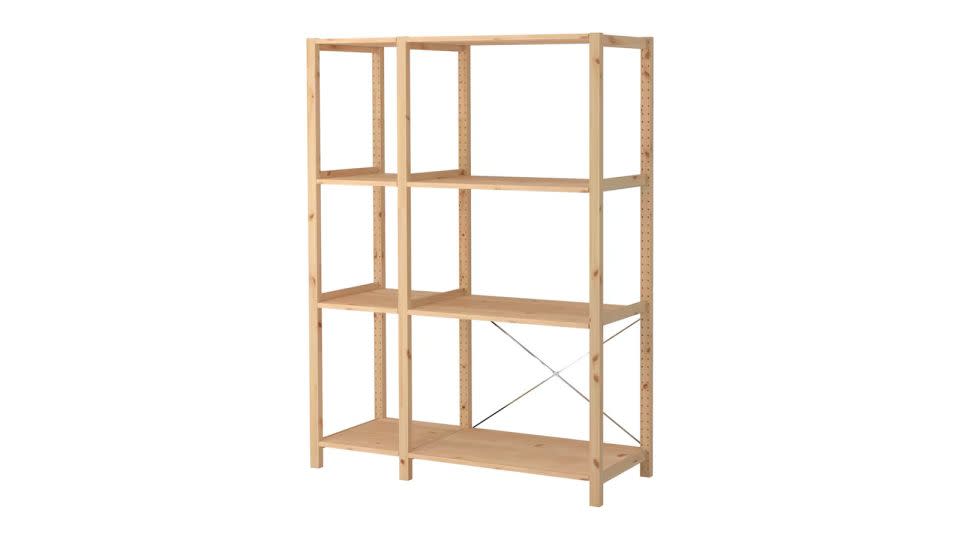
A bigger version of the standard Ivar shelf, the Ivar 2-section adds 1.5 feet (45 centimeters) of extra width to your shelf. Like the smaller Ivar, shelves hold up to 99 pounds and you can move individual shelves up or down to accommodate gear bins, boxes and bags of all sizes. Ivar shelves are known to keep their structure and strength for 50 years or more, so rest assured you’re making a long-lasting investment.
Reibii Garage Shelving
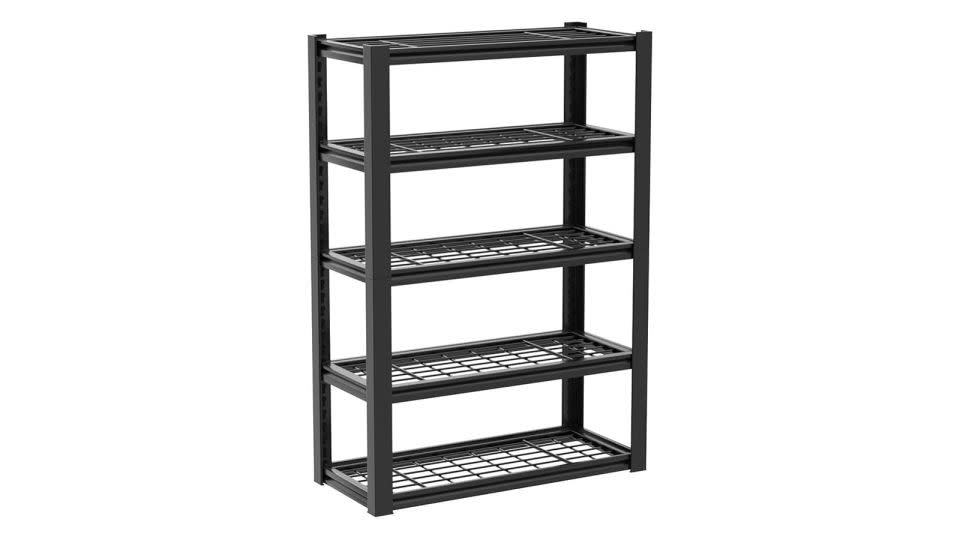
If metal shelves are more your style, Reibii won’t disappoint. These go-to garage storage shelves are extremely durable. Each shelf supports up to 400 pounds, which equates to 2,000 pounds total across all five tiers. The heavy-duty shelves can be adjusted to different heights to fit various-sized containers and gear.
Iris Garment Rack
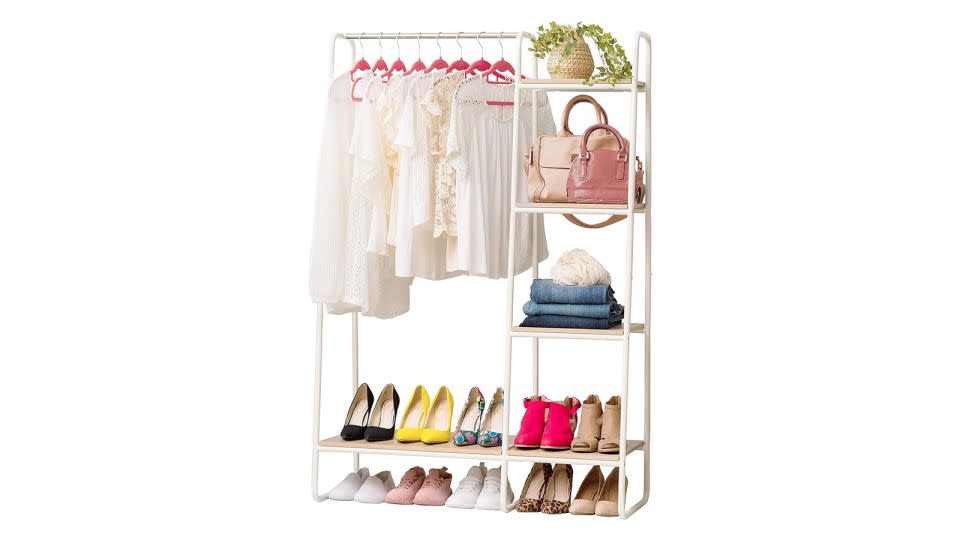
Quickly grab and go with this small, lightweight shelf that’s ideal for small-scale gear storage. With a built-in hanging rack and four-tiered shelf, you can store boots, hang coats and sleeping bags or stack bins full of smaller items. This size shelf fits well in bedrooms, spare rooms or basement storage units. “I use this shelf for my hiking boots, hiking hats and fanny packs, and I'm always switching out gear on this shelf seasonally,” says West.
WLive 9-Drawer Dresser
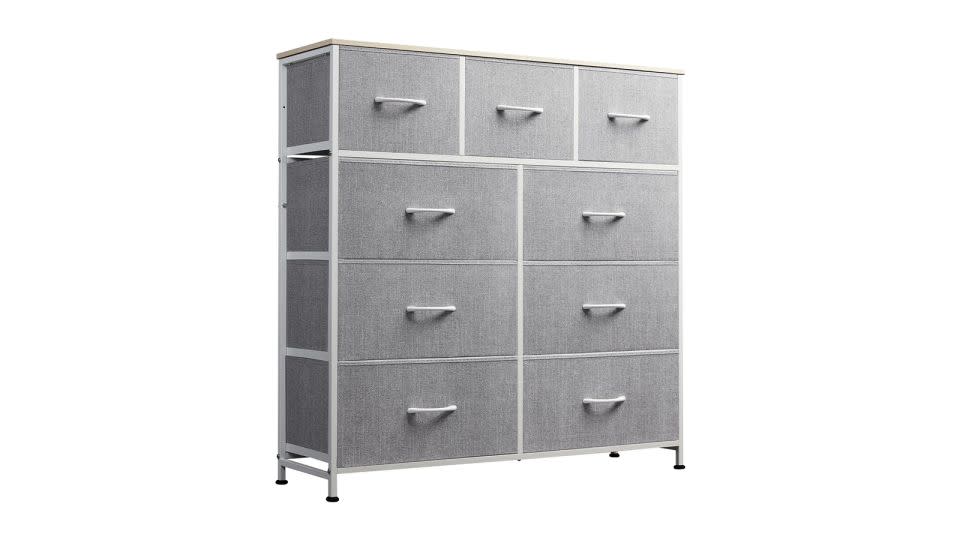
Best for outdoor apparel, soft goods and small items, the WLive 9-Drawer Dresser makes a great addition to any gear closet. The lightweight, soft-sided bins are smooth to open and close and a metal frame means this dresser will last much longer than composite wood you find on cheaper-manufactured shelves in this category.
Boxes and bins
Ikea Knagglig Box
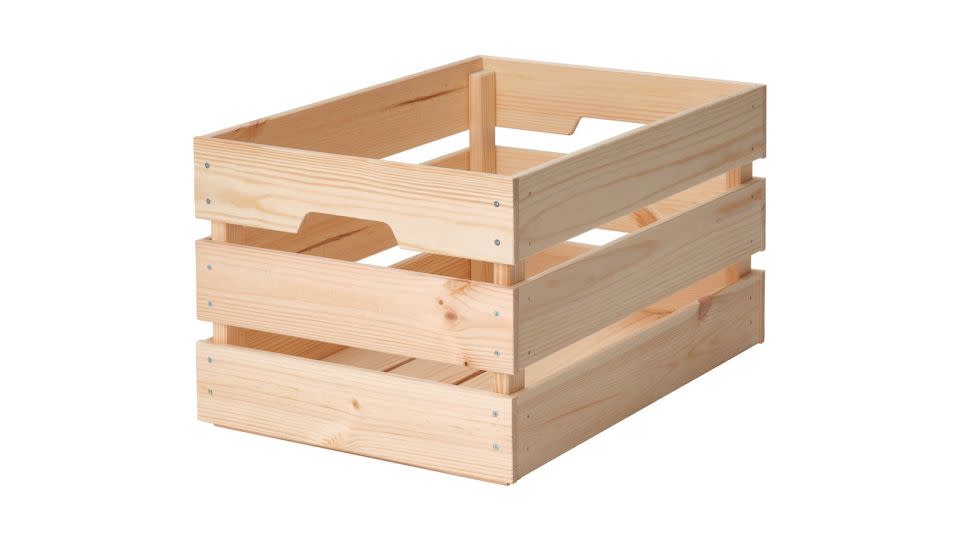
Ikea Knagglig boxes pair perfectly with Ikea Ivar shelving (and other shelving too). Their sturdy pine structure stands up to accidental dings and scratches and won’t give out under the weight of heavier outdoor gear. They’re easy to carry thanks to dual side handles and you can save space by stacking two boxes directly on top of one another.
Gregory Alpaca Gear Box 45
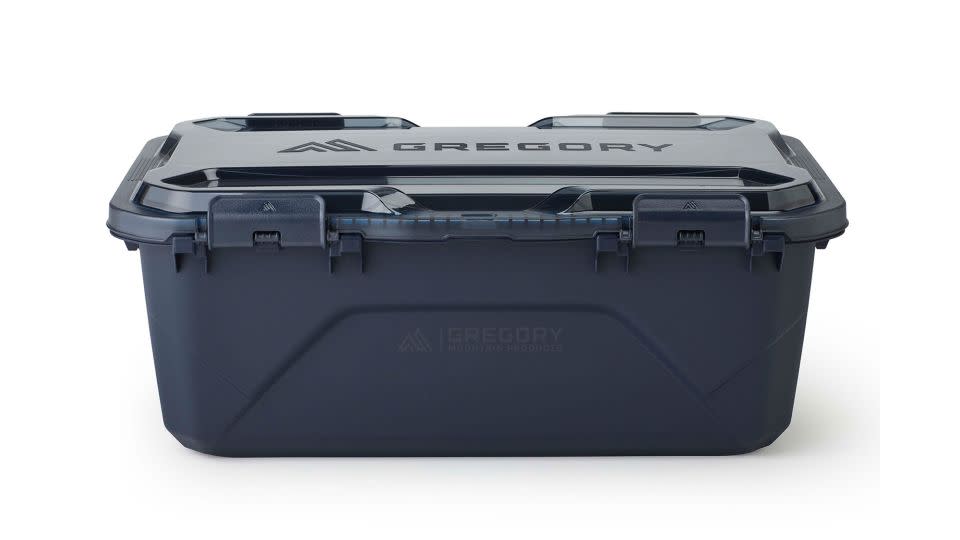
Waterproof, dustproof and durable, the Gregory Alpaca Gear Box keeps your stuff from getting wet and dirty out in nature. Its smash-proof, polycarbonate construction means you can toss and stack these bins without worrying about damage. Inner sealed gaskets keep water from seeping into the box and drainage channels on top of the lid let water flow off during bad weather. A clear lid also allows you to see inside the top of the box without opening it and digging around for your gear.
REI Co-op Trailgate Gear Bin
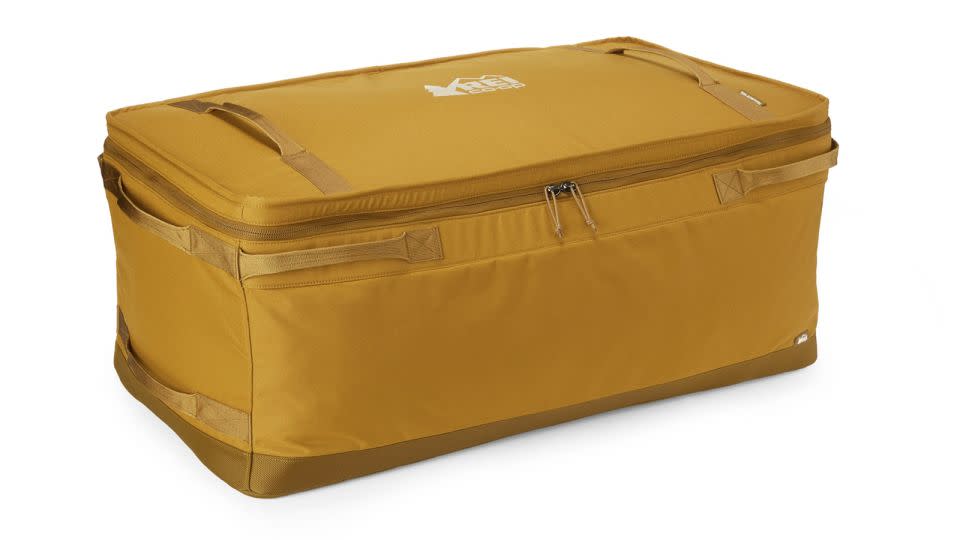
This is a big, burly bag to fit and organize your outdoor gear for camping and road trips. Sturdy handles on the top, side and bottom make carrying and throwing this soft-sided bin into your trunk easy. You can also store soft items inside like sleeping bags and down jackets so they have room to expand but remain contained. The REI Co-op Trailgate Gear Bin comes in a larger 140-liter ($150) and a smaller 60-liter ($100) option.
Rubbermaid ActionPacker️ 24-Gallon Storage Box, Set of 2
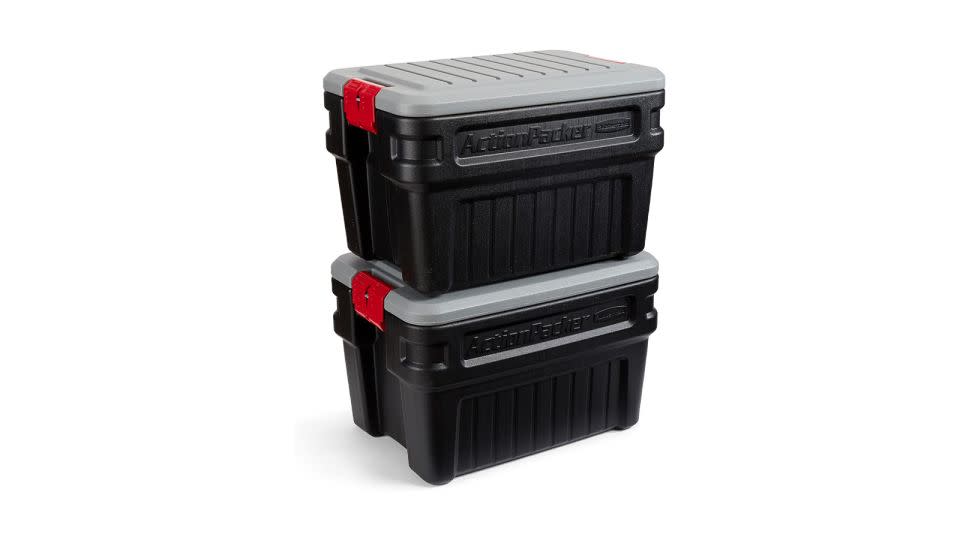
Protect your gear in this large, hard-sided gear box built for rugged travel and storage. The 24-gallon box comes in a set of two that nest on top of each other when stacked. “I've been using these durable bins for the last 10 years,” says West. ”They're nice because they’re sturdy enough to stand or sit on, and you can use them as a cutting board — they’re so multi-use.”
Rubbermaid Pack & Go 14-Gallon Storage Tote, Set of 3
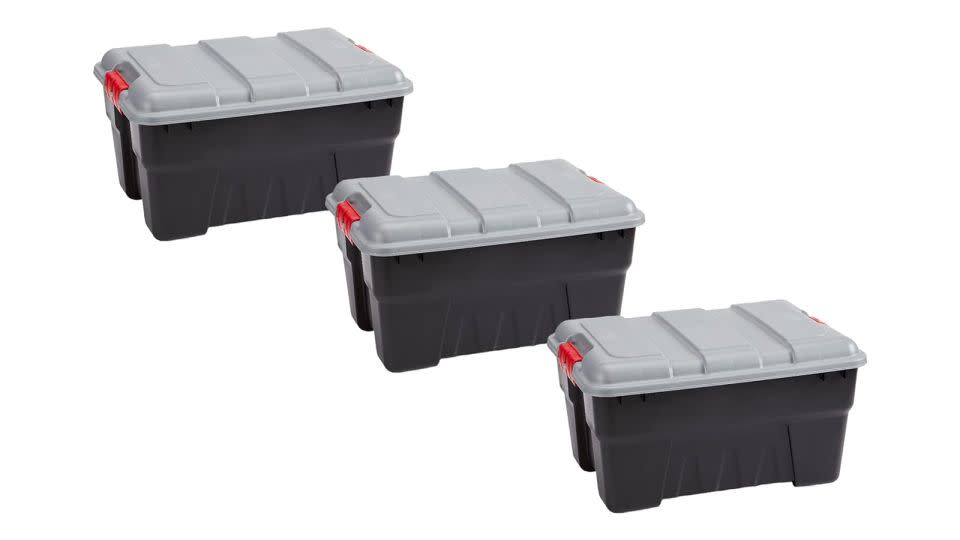
For smaller items, the Rubbermaid Pack & Go 14-gallon totes are sealed and secure for all types of storage and transport. Latching handles on each side of the container keep the lid locked on tight so gear won’t fall out in transit. These totes are sold as a three-pack and also come in a slightly larger 16-liter size ($90).
Rux 70L
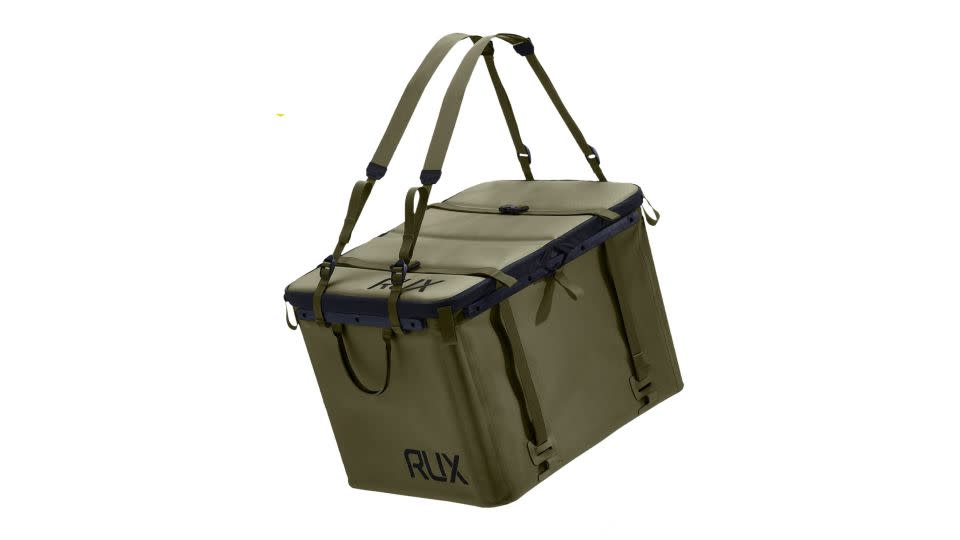
This bin is pricey but versatile, and the perfect way to stash your camping goods. It’s incredibly durable and weatherproof, and the brand sells modular accessories to help keep the bin extra organized. Plus, it has several carry options so you can haul it like a box, throw it over your shoulder like a tote or even wear it as a backpack.
Wallmaster 8-Bin Storage Bins
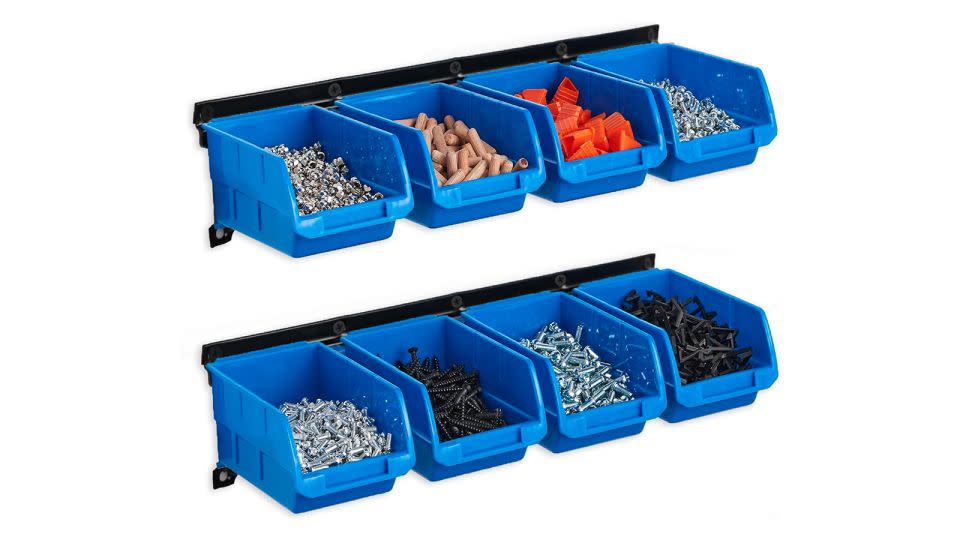
Organize camping, climbing, biking and other small accessories with these simple, wall-mounted storage bin containers. The removable bins can be detached and reattached as desired, which is helpful while packing and unpacking gear before, during and after trips. Each bin can support up to 22 pounds.
Baskets and bags
Gregory Alpaca Gear Basket 70
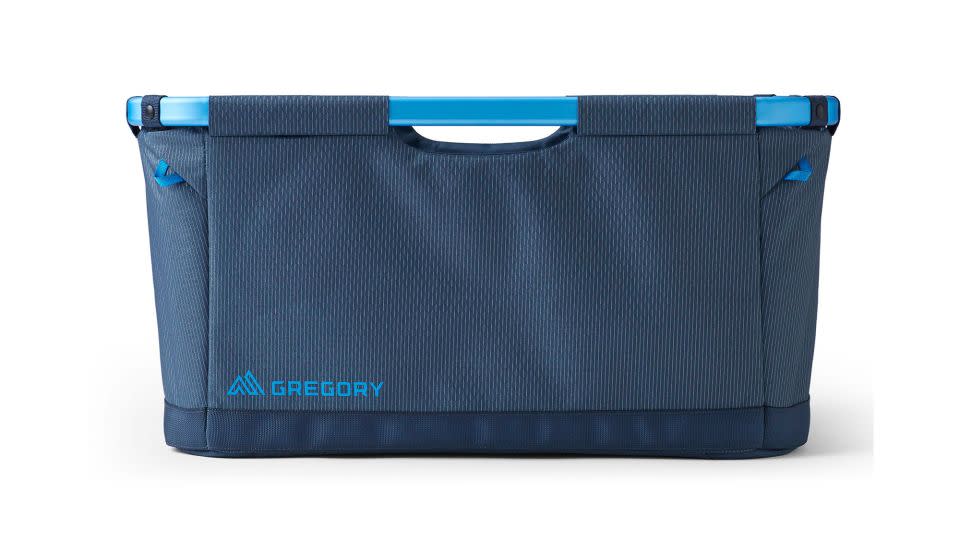
This rugged, flexible and spacious gear basket holds up to 70 liters of gear. A strong aluminum frame provides strength and durability when carrying heavy items, yet its durable fabric side walls can collapse to save space when not in use. “This 70-liter gear basket is perfect,” says West. “It fits perfectly in my passenger seat and I can throw all my food, my yoga mat, my cameras and everything I need to get outdoors into the main basket and go.”
REI Co-op Sleeping Bag Storage Sack
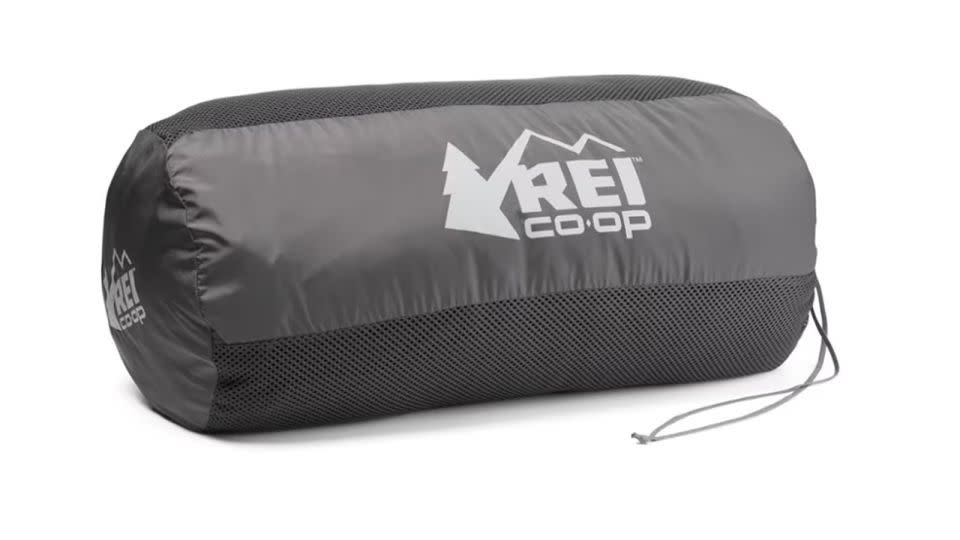
Down, and even synthetic, sleeping bags are best kept unstuffed for long-term use. You can store your sleeping bags, camping blankets and other soft goods in the off-season in this ventilated storage sack. Its large mesh fabric design lets gear breathe inside, air out and keep its loft even when in storage.
Gregory Alpaca Gear Pod 5
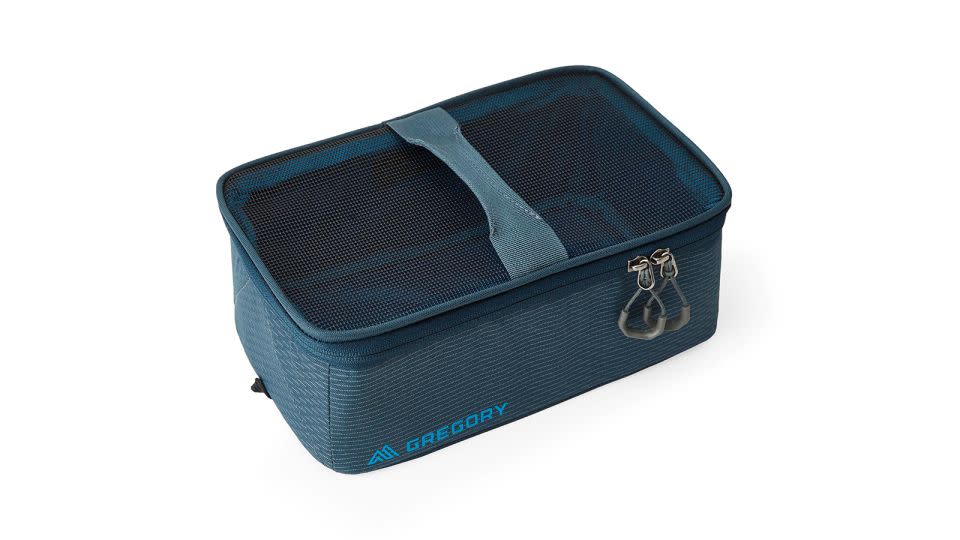
This soft storage pod keeps your items secure and in view at all times. A zipper mesh lid gives you visibility and handles on the top of the pod make for easy carrying and traveling. “I love these gear pods because they're padded,” says West. “I use them to store my bike accessories like bike lights, and I also have one that I made into a DIY first aid kit.” A larger, 10-liter size ($35) is also available.
Patagonia 14-Liter Black Hole Cube
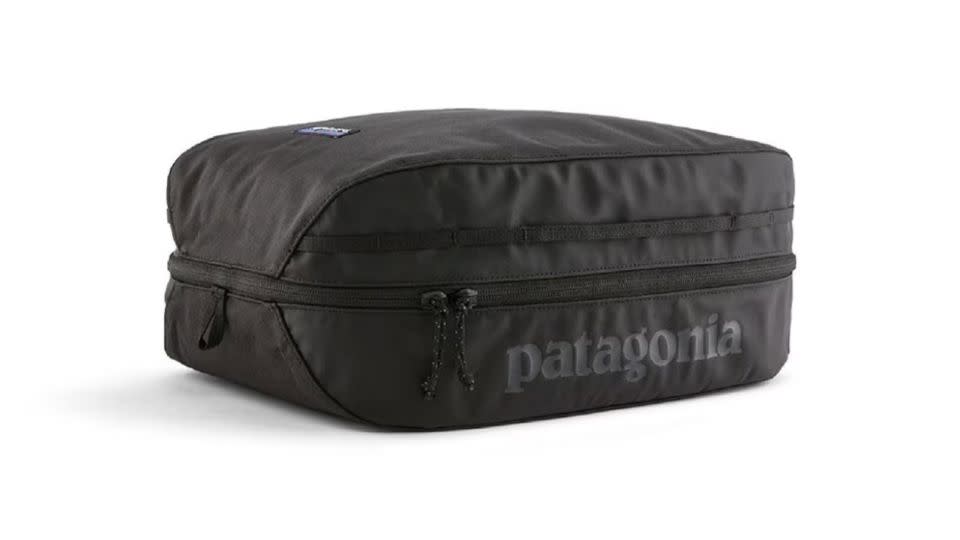
Big enough to hold items like hiking boots, a backpacking stove and kitchen supplies, or several smaller camping accessories, the 14-liter Patagonia Black Hole Cube makes a great packing companion for adventure travel. Its clamshell design makes packing and unpacking simple, and a zippered divider helps keep inner items separated and tidy. You can also attach carabiners or secure the bag down with straps using the outer loops that run along the side of the bag.
Thule Compression Packing Cube Set
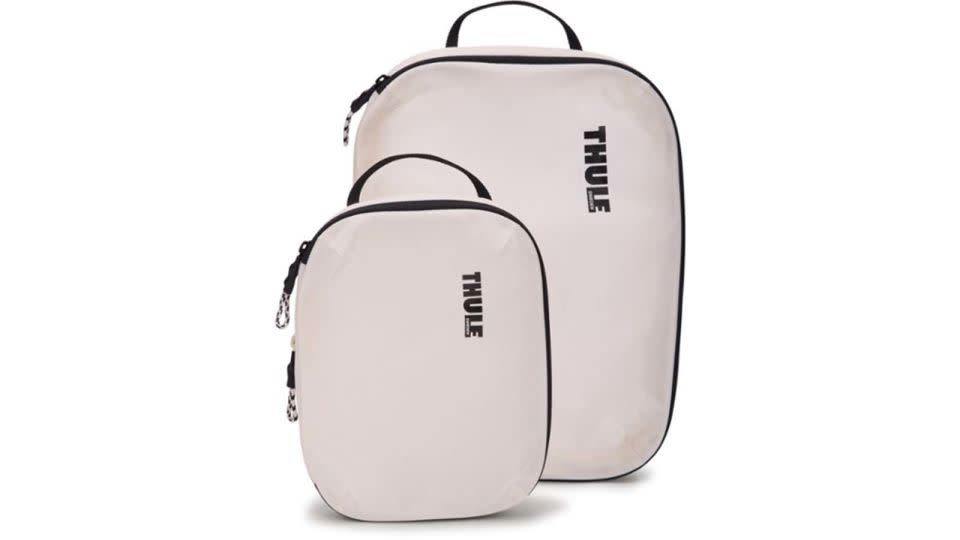
Most packing cubes pride themselves on their lightweight design. Thule’s Compression Packing Cube Set stands out for its durability and versatility. Made from durable, 100-denier ripstop nylon, these cubes will stand up to wear and tear over many years of adventure and travel. The cubes also have an added compression zipper that lets you cinch down the cube or unzip it to add extra capacity. The two-pack set comes with both an 11-liter and 4-liter cube.
Note: The prices above reflect the retailers' listed price at the time of publication.
For more CNN news and newsletters create an account at CNN.com

